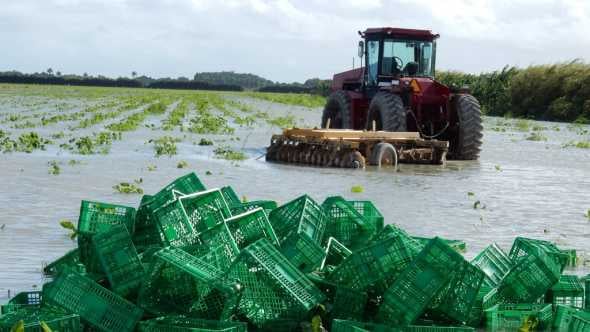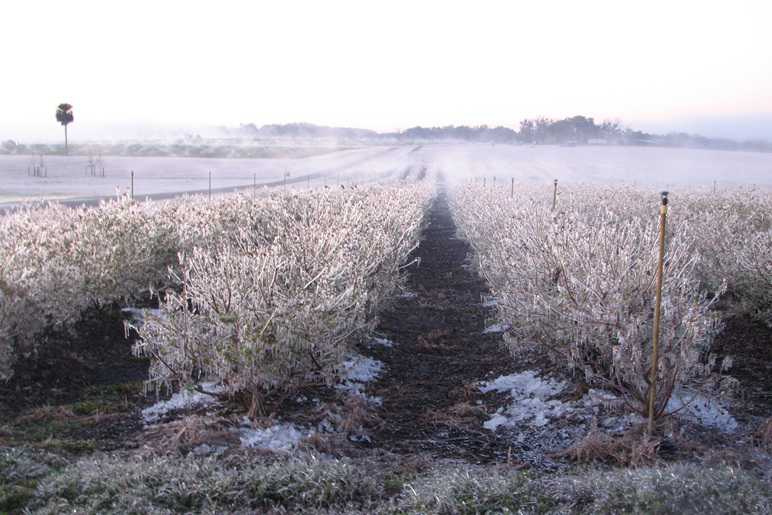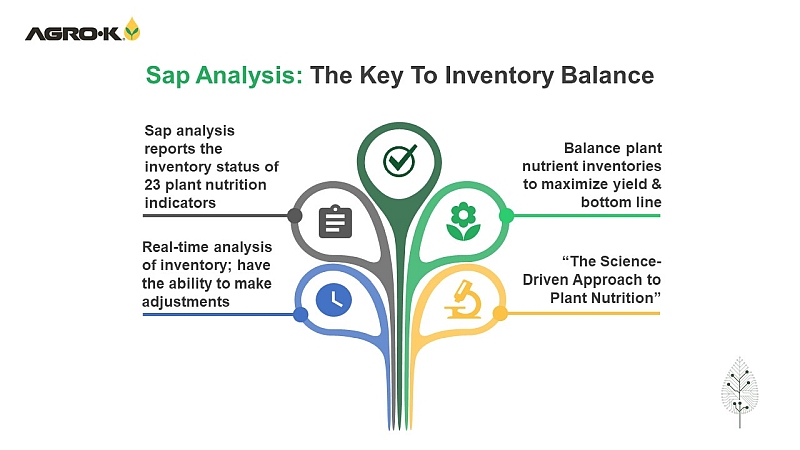What You Need To Know About Crop Insurance
For young growers, securing crop insurance can seem like a daunting task with all of the information available. Fortunately, there are options at your disposal through USDA’s Risk Management Agency (RMA), which manages the Federal Crop Insurance Corporation, providing crop insurance products to growers.

Photo courtesy of FDACS
Through the Federal Crop Insurance Program, approved insurance providers (AIPs) sell and service federal crop insurance policies in every state through a public-private partnership with RMA. RMA then backs the AIPs who share the risks associated with catastrophic losses due to major weather events.
RMA Associate Administrator Tim Gannon offers young growers four pointers to keep in mind about federal crop insurance and what mistakes they should avoid.
1. People New To Farming And Ranching Can Get Special Considerations
With its beginning farmers and ranchers provisions, USDA continues to serve the next generation of growers by improving access to land, capital, and risk management tools, Gannon says. Those who qualify for the beginning farmer and rancher designation, receive an extra 10% in premium subsidy, meaning the premium for crop insurance paid out of pocket by the grower is less.
Furthermore, qualifying beginning growers do not have to pay an administrative fee for their policy, may use the production history of the previous grower from that farm, and are eligible for a higher substitute yield adjustment used for the years they did not have a history of growing the crop to help determine the expected yield.
2. Consider Going Organic
Organic agriculture is experiencing remarkable growth in the U.S., seeing $39 billion in retail sales last year. The RMA oversaw $649.7 million in federal insurance coverage provided nationwide in the 2015 crop year for certified organic crops and those transitioning to certified organic.
In addition to the same opportunities for crop insurance that are available to non-organic growers, RMA has established organic prices for 57 crops that more accurately reflect the higher prices organic growers receive for their crop.
Also, for more than 60 crops, organic growers and growers transitioning to organic practices may now use their contract prices to cover an amount of liability that is more reflective of the actual value of their crop through the use of RMA’s Contract Price Addendum. Whole-Farm Revenue Protection coverage also is available to organic crop growers, Gannon adds.
3. Understand Your Coverage And The Covered Causes Of Loss
Causes of loss are crop specific and can change depending on the crop. It is best to consult the specific crop provisions for more information regarding covered causes of loss, he says.
Noteworthy causes of loss include:
• Adverse weather conditions;
• Failure of the irrigation water supply due to a specified cause of loss that also occurs during the insurance period;
• Fire;
• Insects, but not damage due to insufficient or improper application of pest control measures;
• Plant disease, but not damage due to insufficient or improper application of disease control measures; and
• Wildlife.
4. Know Your Dates
Adhere to the deadlines in the Federal Crop Insurance Program.
• Sales closing date: This is the date an application must be filed and is the last date you may change your crop insurance coverage for a crop year.
• Acreage reporting date: This is the date you are required to submit your acreage report.
• Earliest planting date: This is the initial planting date, which is the earliest date you may plant an insured agricultural commodity and qualify for a replanting payment, if such payments are covered by the policy.
• Final planting date: This is the date a crop must initially be planted to be insured for the full production guarantee or amount of insurance per acre.
5 Crop Insurance Mistakes To Avoid

5 Crop Insurance Mistakes To Avoid
If you are a young or beginning grower, USDA’s Risk Management Agency (RMA) Associate Administrator Tim Gannon says to steer clear of these five crop insurance blunders.
1. Waiting until a loss occurs to decide insurance is needed. Don’t wait until you have a loss to explore your options in managing risk.
2. Not dedicating time to learn about crop insurance choices. Spend the time needed to explore various combinations of crop insurance products, individual-based and area-based, to find the best fit for your farm.
The RMA Agent Locator web page provides information about insurance agents and will help growers find agents selling crop insurance in their area. There even is a process by which you can request insurance on a crop that is not insurable in your county, but is insurable in other counties. For this, you may complete and submit a Request for Actuarial Change through a crop insurance agent.
3. Deciding you can’t afford insurance before checking out the possibilities. Every grower’s situation is a bit different and you will want to work with experts including your crop insurance agent, to consider your farm’s financial needs and risks, along with various choices and combinations of products for crop insurance. The RMA website shows all of the crop policies available as well as a cost estimator that can help you estimate the amount of insurance and premium.
4. Not buying because there isn’t an agent nearby. If you are having problems finding an agent, contact one of the insurance companies on the RMA website and talk to someone who can help you find an agent.
5. Not knowing your numbers. Records are important and so is figuring out whether a crop will be profitable. These same numbers will be used to determine the correct amount of insurance for risk protection for your farm and will be used to determine loss payments.

Question From A Grower: What Are The Options When You Don’t Have Historical Yield Or Earnings Data?
USDA’s Risk Management Agency (RMA) Associate Administrator Tim Gannon addresses a question from a young grower seeking help with crop insurance.
“I am a tree fruit grower in my third year of production, but the past two years my trees suffered freeze damage and I did not have a crop either year. This year, my orchard sustained hail damage. Because my orchard doesn’t have historical yield or earnings data, I can’t file a claim. What should I do?”
Gannon: In this case, you could have purchased crop insurance in your third year, and the expected yield would have been determined based on a mixture of your actual production for the two previous years and a percentage of the county’s transitional yield, which is an average county yield as determined by RMA.
Since you did not have production those first two years because of freeze damage, you could use a yield substitution option to replace the zero yields with 60% of the county transitional yield. Thus, you would have had historical data and could have received coverage. For some tree crops, there are additional requirements to be considered insurable, such as the age of the tree and/or minimum production.
Another consideration would be if you qualify as a new producer. If you haven’t grown the crop in question for more than two years in the county, you could receive an initial yield of 100% of the county transitional yield. A young grower may also be eligible for beginning farmers and ranchers’ provisions, which would lower the premium and could increase any yield adjustments that were opted for as a result of adverse weather or natural disaster.
Suggestion to the young grower: Go see an agent to learn about crop insurance and all the options that may be available as a risk management tool.








